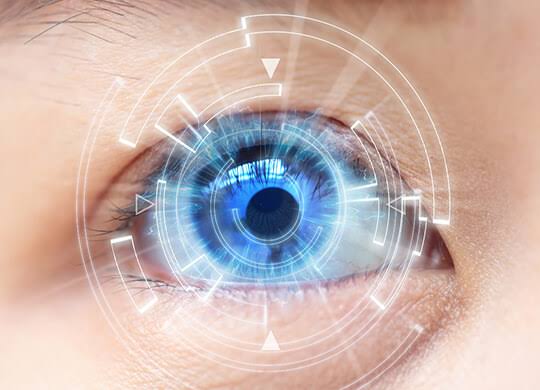What is an excimer laser?
It is a UV laser with a wavelength of 193 nm, obtained by electrically stimulating an argon-fluoride gas mixture. It has been used in the treatment of refractive errors for over 25 years. It is a very sensitive device.
Who can benefit from laser treatment?
- Individuals between the ages of 18–60 who do not have a systemic disease (diabetes – rheumatism etc.) and chronic eye disease (glaucoma-uveitis-macular degeneration etc.),
- Women who are not pregnant, postpartum or breastfeeding,
- Individuals who have not experienced a significant change in their eye refractive index recently
- Myopes, hyperopia and astigmatism with sufficient corneal thickness and suitable surface correction can benefit from this treatment.


How can I tell if my eyes are suitable?
A detailed eye examination is required. Your degree of vision, detection of eye disorder, eye pressure measurement, biomicroscopic examinations are performed. Then, the pupils are dilated with drops, eye numbers are determined again with drops, and a detailed eye fundus (retinal vascular structure and optic nerves) examination is performed.
Since the pupils will be dilated with drops during the examination, there may be discomfort in light and blurred vision and it may last for 24 hours. Those who will drive a car should take this into consideration.
What should I do before coming to the examination?
Those who use soft lenses should stop using their lenses 1 week before, and those who use semi-rigid gas permeable lenses should stop using them 3 weeks before.
What is Wavefront laser treatment?
Optical errors in the eye are not limited to myopia, hyperopia and astigmatism. Just like a fingerprint, the optical characteristics of the eye are unique to the person. These optical errors, called high-level aberrations, are evaluated with devices that measure from hundreds of separate points using telescopic lenses (wavefront analyzers). These optical errors, which can cause complaints such as night vision problems, reflection and dispersion in lights (street lights, car headlights), can be corrected with personalized wavefront laser treatment.
Is the laser device used when performing wavefront excimer laser different from a normal excimer laser device?
The laser used in standard laser eye treatment and wavefront laser treatment is the same excimer laser. The difference is this: In personalized laser treatment, the detailed data obtained from the wavefront imaging system is transferred to the excimer laser in a computer environment and your doctor has the opportunity to perform a more detailed treatment using this data.
Wavefront data can be applied in both lasik and surface treatment techniques such as prk.
How is Intralase LASIK applied?
In the traditional method, a circular incision is made by hand using a knife to create a corneal flap. With the Intralase device, this procedure is performed entirely with laser shots, that is, without contact with your eye. While creating the flap, the 3D corneal map data created in the previous step is used, thus creating a flap in accordance with the structure of the eye.
After the flap lift procedure performed with Intralase, the cornea is reshaped by applying a laser procedure
PRK and LASEK Method
In the PRK and Lasek methods, the epithelial tissue on the outermost part of the eye is removed before the laser procedure and then the laser procedure is performed. The PRK system is an older method than LASEK. In the PRK method, the epithelial tissue is peeled off with the help of a surgical instrument. In the LASEK method, this tissue is removed in a layer form with the help of alcohol and is replaced after the laser procedure. The tissues heal within 3-4 days after the surgery and fuse the epithelial tissue back to the upper part of the eye. However, this process can be painful in some patients. It may take 3-4 weeks for the eye to heal completely.
What happens after the operation?
It is normal for the eyes to burn, water and have blurred vision for 4–5 hours. Drops are used once an hour after the operation. The surgery is checked the next day. Afterwards, patients can usually return to their daily work within 3–4 days. However, since the recommended drops are used intensively in the first week, we recommend that our patients spend 1 week for this operation. The next three weeks are again reduced use of drops.
